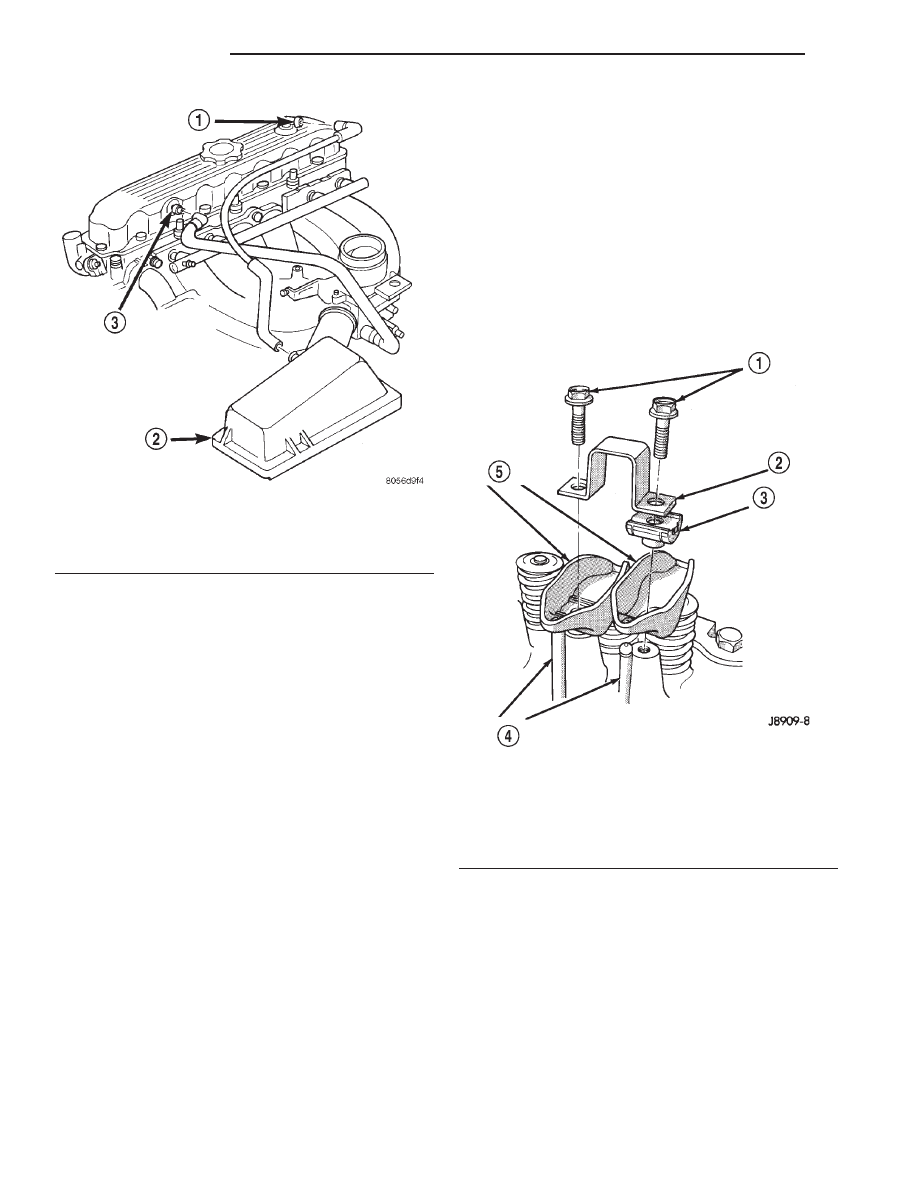Jeep XJ. Manual - part 292

INSTALLATION
(1) Inspect the engine cylinder head cover for
cracks. Replace the cover, if cracked.
NOTE: The
original
dark
grey
gasket
material
should NOT be removed. If sections of the gasket
material are missing or are compressed, replace the
engine cylinder head cover. However, sections with
minor damage such as small cracks, cuts or chips
may be repaired with a hand held applicator. The
new material must be smoothed over to maintain
gasket height. Allow the gasket material to cure
prior to engine cylinder head cover installation.
(2) If a replacement cover is installed, transfer the
CCV valve grommet the oil filler cap from the origi-
nal cover to the replacement cover.
(3) Install engine cylinder head cover. Tighten the
mounting bolts to 13 N·m (115 in. lbs.) torque.
(4) Connect the CCV hoses (Fig. 52).
(5) Connect negative cable to battery.
(6) Install the air inlet hose and resonator.
ROCKER ARMS AND PUSH RODS
This procedure can be done with the engine in or
out of the vehicle.
REMOVAL
(1) Remove the engine cylinder head cover. (Refer
to procedure in this section)
(2) Check for rocker arm bridges which are caus-
ing misalignment of the rocker arm to valve tip area.
(3) Remove the capscrews at each bridge and pivot
assembly (Fig. 53). Alternately loosen the capscrews
one turn at a time to avoid damaging the bridges.
(4) Remove the bridges, pivots and corresponding
pairs of rocker arms (Fig. 53). Place them on a bench
in the same order as removed.
(5) Remove the push rods and place them on a
bench in the same order as removed.
(6) Clean all the components with cleaning sol-
vent.
(7) Use compressed air to blow out the oil passages
in the rocker arms and push rods.
INSTALLATION
(1) Lubricate the ball ends of the push rods with
Mopar Engine Oil Supplement, or equivalent and
install push rods in their original locations. Ensure
that the bottom end of each push rod is centered in
the tappet plunger cap seat.
(2) Using Mopar Engine Oil Supplement, or equiv-
alent, lubricate the area of the rocker arm that the
Fig. 52 Engine Cylinder Head Cover
1 – AIR INLET FITTING
2 – AIR FILTER COVER
3 – FIXED ORIFICE FITTING
Fig. 53 Rocker Arm Assembly
1 – CAPSCREWS
2 – BRIDGE
3 – PIVOT ASSEMBLY
4 – PUSH RODS
5 – ROCKER ARMS
9 - 36
2.5L ENGINE
XJ
REMOVAL AND INSTALLATION (Continued)